Home>Products>Small Scale Oil Refining Line>2 Ton peanut groundnut coconut small scale edible oil refinery
2 Ton peanut groundnut coconut small scale edible oil refinery
- Small Scale Oil Refining Line
Small Scale Oil Refining Line
- China
- CE ISO
- One set 2 Ton peanut groundnut coconut small scale edible oil refinery
- [email protected]
- 1*40HQ
- contact with us
- paypal,UnionPay, Visa/MasterCard, Amex, Discover,T/T
- 110
Microwave dryer dehydration sterilization machineChina
-
 Microwave dryer dehydration sterilization machine2020-07-10 09:46:19
Welcome to my shop! Glad to serve you! Please send your question!
Microwave dryer dehydration sterilization machine2020-07-10 09:46:19
Welcome to my shop! Glad to serve you! Please send your question!
Product Description
2 Ton peanut groundnut coconut small scale edible oil refinery
The main component of crude oil is a mixture of glycerol tri-fatty acid esters (commonly known as neutral oil). In addition to neutral oil, the crude oil also contains non-glyceride substances (collectively referred to as impurities), its type, nature, state, can be divided into mechanical impurities, fat-soluble impurities and water-soluble impurities in three categories.
Degumming: The process of removing peptizing impurities in crude oil is called degumming. Due to the insoluble impurities in the crude oil is mainly phospholipids, so the industry often called degumming dephosphorization. In the alkali refining before the first addition to soluble impurities, can reduce the loss of neutral oil, improve the quality of alkali refining, can save the amount of alkali, and access to valuable by-products - phospholipids.
Hydration degumming is the use of phospholipids and other hydrophilic impurities in the glue, a certain amount of water or electrolyte dilute solution added to the crude oil under stirring, so that the oil-soluble impurities in water swelling, condensation and separation of a removal Degumming method.
Inf2 Ton peanut groundnut coconut small scale edible oil refineryce Factors of hydration degumming:
1. Operating temperature, 2. Water addition 3. Mixing strength and action time 4. Electrolyte 5. Quality of feedstock oil
Acid refining and degumming: production practice shows that without the removal of phospholipid metal complexes, alkali refining will not only produce the general colloidal emulsification, and the formation of calcium and magnesium and other metal soap washing is not easy to remove. Phosphoric acid treatment and then alkali refining, alkali refining and phospholipids containing soap was significantly reduced.
Dry degumming: This method is suitable for processing with low-colloidal fat.
Physical refining requirements of the oil in the gel content is very low, as little as possible trace metals and heat-sensitive pigments, so often combined with acid treatment and decolorization.
Degumming: The process of removing peptizing impurities in crude oil is called degumming. Due to the insoluble impurities in the crude oil is mainly phospholipids, so the industry often called degumming dephosphorization. In the alkali refining before the first addition to soluble impurities, can reduce the loss of neutral oil, improve the quality of alkali refining, can save the amount of alkali, and access to valuable by-products - phospholipids.
Hydration degumming is the use of phospholipids and other hydrophilic impurities in the glue, a certain amount of water or electrolyte dilute solution added to the crude oil under stirring, so that the oil-soluble impurities in water swelling, condensation and separation of a removal Degumming method.
The inf2 Ton peanut groundnut coconut small scale edible oil refineryce of hydration degumming because:
1. Operating temperature
2. Water addition
3. Mixing strength and action time
4. Electrolyte
5. Quality of feedstock oil
Acid refining and degumming: production practice shows that without the removal of phospholipid metal complexes, alkali refining will not only produce the general colloidal emulsification, and the formation of calcium and magnesium and other metal soap washing is not easy to remove. Phosphoric acid treatment and then alkali refining, alkali refining and phospholipids containing soap was significantly reduced.
Dry degumming: This method is suitable for processing with low-colloidal fat.
Physical refining requirements of the oil in the gel content is very low, as little as possible trace metals and heat-sensitive pigments, so often combined with acid treatment and decolorization.
Deacidification: Uncooked in a variety of crude oil, contain a certain amount of free fatty acids, free fatty acids in the process of removing oil called deacidification. Deacidification methods include alkali refining, distillation, solvent extraction and esterification and other methods. The most widely used in industrial production is the alkali refining and steam distillation (physical refining method).
Alkali deacidification method is the use of alkali and grease in the free fatty acids, the resulting saponins adsorption part of the other magazines and remove the oil from the refining method. Soap has a good adsorption, it can adsorb pigments, proteins, phospholipids, mucus and other impurities, and even suspension of solid impurities can also be flocculent soap entrainment, together from the oil separation, the sediment oil plant soap feet.
Deacidification method
Conventional deacidification methods generally refer to deacidification methods used in industrial processes, including chemical deacidification, physical refining (or deacidification) and mixed oil refining (or deacidification) three methods.
Chemical deacidification, also known as alkali refining deacidification, is the industry's most common method. Usually added to the degumming oil lye, so that alkali and free fatty acids (FFA) reaction, FFA to soap feet form precipitation, some impurities are also soap feet adsorption, soap feet by centrifugal separation removed. Chemical deacidification is usually done using caustic (sodium hydroxide).
Physical deacidification is a method in which steam is introduced into the grease under high 2 Ton peanut groundnut coconut small scale edible oil refinery conditions to allow the vapor to carry FFA, saponification, and odorant. It requires less steam, less water and less power, and low investment; some heat-sensitive pigments (carotenoids) and odor substances are also of high quality and easy to handle. They also have a low fuel consumption compared to chemical deacidification. With steam stripping removed.
Bleaching is mainly in the removal of fat in the pigment, but also can remove the trace of metal in the oil, remove residual traces of soap particles, phospholipids such as colloid and some odor substances, removal of polycyclic aromatic hydrocarbons and pesticides residues.
Grease deodorization is the use of grease in the odor of material and glycerol tri-fatty acid ester volatility difference in high temperature and high 2 Ton peanut groundnut coconut small scale edible oil refinery conditions by means of steam distillation deodorization process.
Grease deodorization can not only remove the odorous substances in the oil to improve the smoke point of oil to improve the flavor of edible oil, but also make the stability of oil, color and quality improved. Because in the deodorization at the same time, but also free fatty acids, peroxide and its decomposition products and some heat-sensitive pigments, moldy oil to remove the volatile decomposition products, remove small molecular weight polycyclic aromatic hydrocarbons and pesticide residues, so that the drop To a safe range.
Factors affecting deodorization:
1. Deodorization temperature
2. Operating pressure
3. Steam velocity and time
4. To be deodorized oil and refined oil quality
5. Direct steam quality
6. Structure of deodorizing equipment
Oil deodorization is divided into intermittent, semi-continuous, continuous and filler film and other processes.
1. Intermittent deodorization suitable for small production, processing and more varieties of oil factory.
2. Semi-continuous deodorization process is mainly used in the refining of oil varieties for frequent replacement of the factory. Compared to the advantages of intermittent deodorization is mainly a short time to replace the feedstock, the system less residual oil.
3. The continuous deodorization process is suitable for processing plants that do not frequently change grease varieties.
Grease dewaxing is a process in which the high-melting point wax and the high-melting-point solid fat are separated from the oil by cooling and crystallizing, and then removed by filtration or centrifugal separation.
Often referred to as oil dewaxing actually contains two aspects of significance: one is to include rice bran oil, sunflower oil, corn oil, safflower oil, wheat germ oil and other wax containing high melting point. The second is to grease the storage of all the solid components in the turbidity removal, in these solid components, both the composition of the wax, there are oil polymers, saturated triglycerides and other ingredients.
In the solid-liquid separation, like the wintering of cottonseed oil is about room temperature to separate the solid fat precipitation, and from the palm oil will be different from the melting point of oil and grease to distinguish, it is about 0 ℃ palm palm oil and palm oleic acid Of the high melting point component crystallization to distinguish, therefore, for the removal of saturated glycerol ester process should be called the sub-mention more precise, winter can also be referred to as the natural sub-mention.
Wax content of different vegetable oils:
Oil |
Wax/% |
Unsaponifiable matter /% |
Rice bran oil |
3-9 |
3-5.0 |
Corn oil |
0.05 |
0.8-2.9 |
Sunflower oil |
0.01-0.35 |
0.3-1.2 |
Safflower oil trace |
trace |
0.3-1.2 |
Rapeseed oil |
0.0016 |
0.3-1.2 |
Wheat germ |
- |
2-6 |
Soybean oil |
- |
0.2-0.5 |
Fractionation method is divided into two steps of crystallization and separation, the first cooling oil precipitation crystal, and then the crystal - liquid separation to be solid and liquid oil. Fractionation is the process of lipid modification, which involves changes in the composition of the oil.
Palm oil is an important sub-raw material. Both palm oil and refined palm oil can be used for fractionation. The main purpose is to obtain low freezing point and high freezing stability of the oil. Single-stage production of liquid oil production of freezing point (cloud point) below 10 ℃, the melting point of stearin is 44-52 ℃. Liquid palm oil is used as a surrogate for cooking soft and salad oils, while stearin is used in frying oil, margarine and shortening.
Pictures:



Contact Us

- Microwave dryer dehydration sterilization machine
- AddressBawang Road, Licheng District, Jinan City, Shandong Province
- Phone(Working Time)86-531-4897119
Related News
| Microwave Technology in Traditional Chinese Medicine Production |
Product Categories
- laboratory drying equipment
- chinese herb dehydration and sterilization
- chinese medicine herb drying equipment
- chemical powder drying equipment
- Microwave dryer and sterilization machine
- chinese medicine extraction machine
- paper dehydrator and sterilizer
- paperboard drying equipment
- microwave fast food heating machine
- latex products drying machine
- microwave oven tunnel machine
- Microwave roasting equipment
- microwave sterilizer equipment
- Oil seeds Processing Line
- soybean oil machine
- Sesame Oil machine
- coconut oil processing machine
- mustard oil machinery
- Shea Nut Oil machine
- Castor Oil machine
- Walnut Oil machine
- Corn Germ Oil machine
- Rapeseed Oil machine
- Rice Bran Oil machine
- microwave dryer equipment
- cottonseed oil machine
- Sunflower Oil machine
- Peanut Groundnut Oil machine
- Small Scale Oil Refining Line
- palm fruit machine
- solvent extraction machine
- Full Continuous Refining Line
- Biodiesel Machine
- flaxseed oil Machine
- camellia oil Machine
- moringa seed oil machine
- Complete oil production line
- Seed Hydraulic Press Machine
- Large Scale oil Machine
- Edible Oil Filling Line
- oil Pretreatment Equipment
- Oil Extraction Equipment
- puffed snack food machinery
- corn filling snack machinery
- Fish food machine
- Animal food machinery
- Fried Kurkure machine
- Fried cheetos machine
- Baked kurkure machine
- Baked cheetos machine
- Corn flakes Machinery
- Frying snacks machinery
- Nacho Chips machinery
- Corn Chips machinery
- Tortilla machine
- doritos machine
- bugles machine
- Soyabean protein machine
- Extrusion food machine
- Macaroni pasta machinery
- Nutritious artifical rice food machine
- Bread crumbs machine
- Nutritional powder machine
- Modified starch machine
- modify starch machine
- Potato Chip Machine
- rice cracker machine
- Biscuit Production Line
- Textured Soya Protein machine
- Instant Noodles Production Line
- Fried Wheat Flour Snacks Making Machine
- Nutrition Bar Making Machine
- snack Food Packing Machines




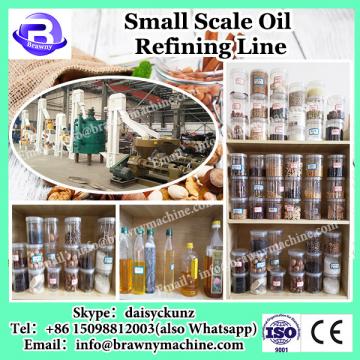 New arrival supreme quality small scale rapeseed oil making machine
New arrival supreme quality small scale rapeseed oil making machine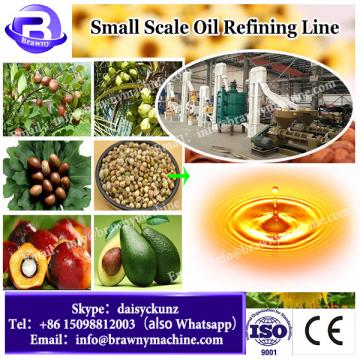 Bottom price top sell small scale palm oil making machine
Bottom price top sell small scale palm oil making machine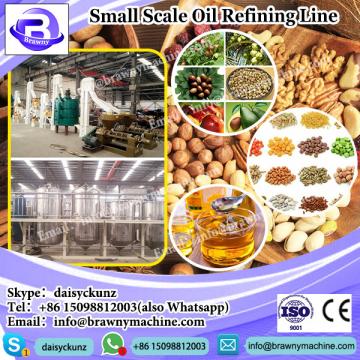 Top grade high grade small oil extraction plant
Top grade high grade small oil extraction plant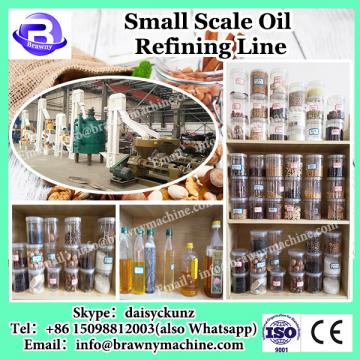 Wholesale cheap fast delivery small press oil machine
Wholesale cheap fast delivery small press oil machine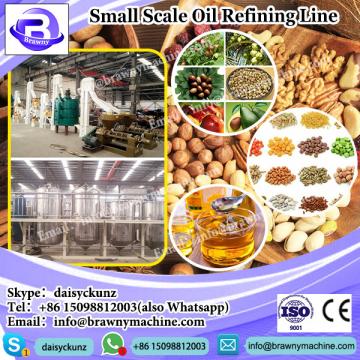 China gold manufacturer hot sell small soybean oil machine
China gold manufacturer hot sell small soybean oil machine